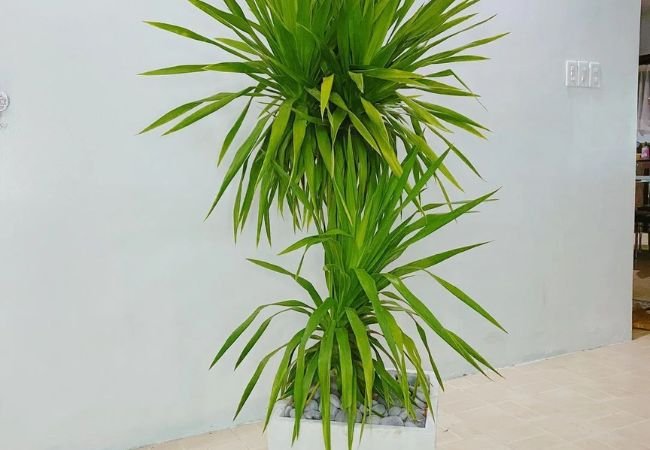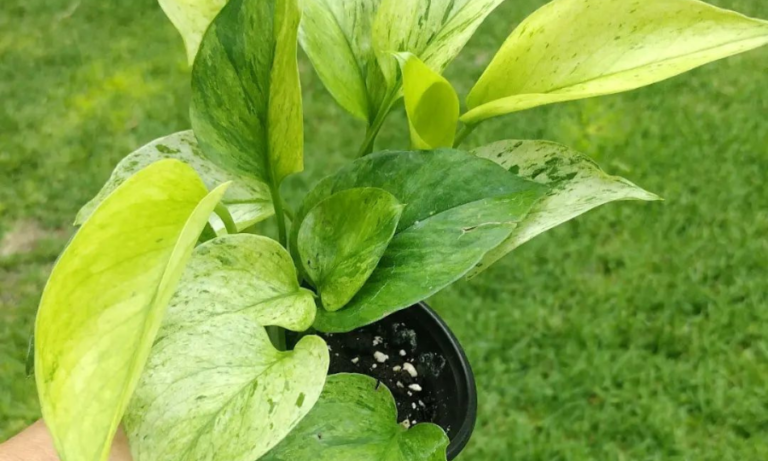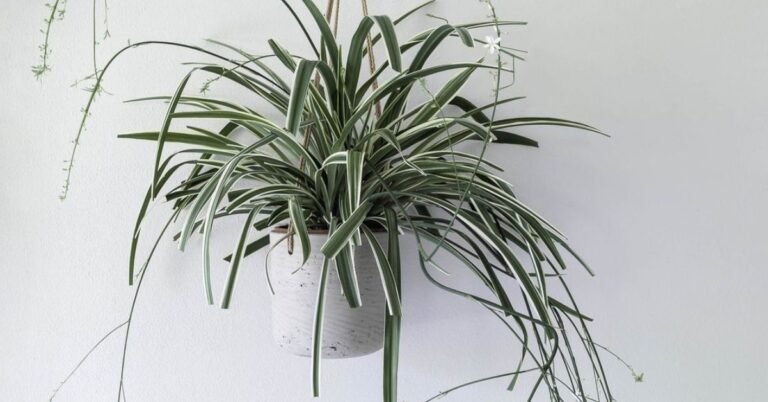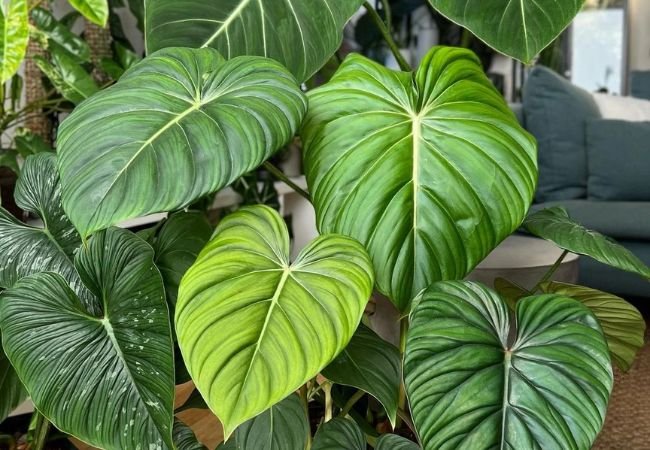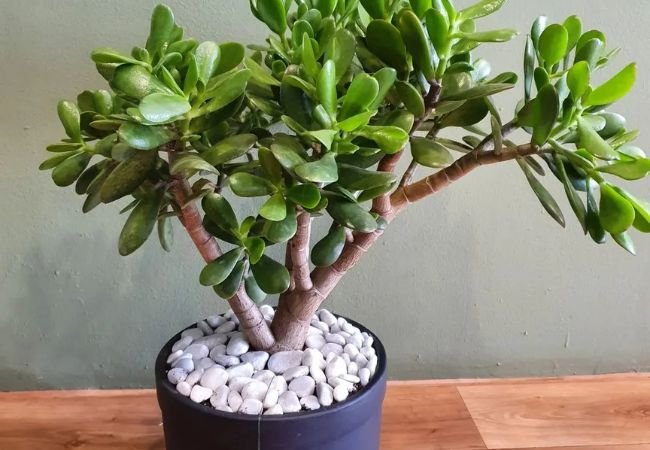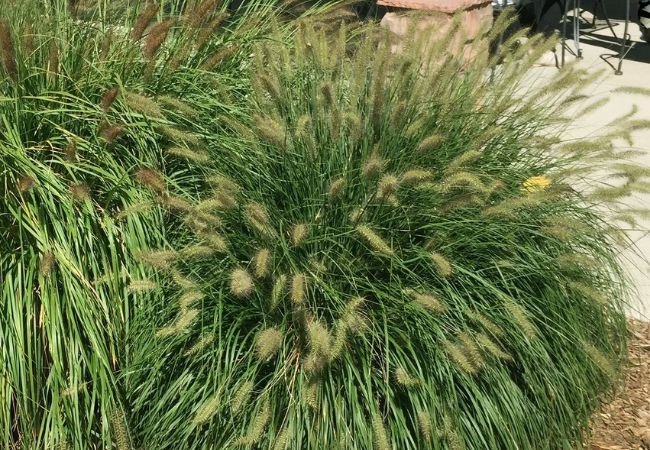How to Grow Tradescantia Spiderwort (Tradescantia zebrina)
Discover how to easily grow vibrant tradescantia spiderwort plants! This guide covers planting, caring for and propagating these fast-growing, trailing beauties for containers or landscapes.
With their brightly colored, striped foliage and ability to trail delicately from hanging baskets, tradescantia spiderwort plants are a gorgeous choice for adding punches of color and interest. Even better, these vigorous growers are about as easy to care for as houseplants come!
If you’d like to cultivate some vibrant tradescantia in your home or garden, this guide will walk you through all the essentials from planting to routine care to propagation. Let’s get started!
Here’s a short chart with information about Tradescantia (Spiderwort) plants:
| Aspect | Information |
|---|---|
| Botanical Name | Tradescantia spp. |
| Common Names | Spiderwort, Wandering Jew, Inch Plant |
| Plant Type | Perennial |
| Zones | 4-12 (varies by species) |
| Exposure | Full sun to partial shade |
| Bloom Time | Spring to early summer |
| Height/Spread | 6-24 inches tall, 12-18 inches wide |
What is Tradescantia?
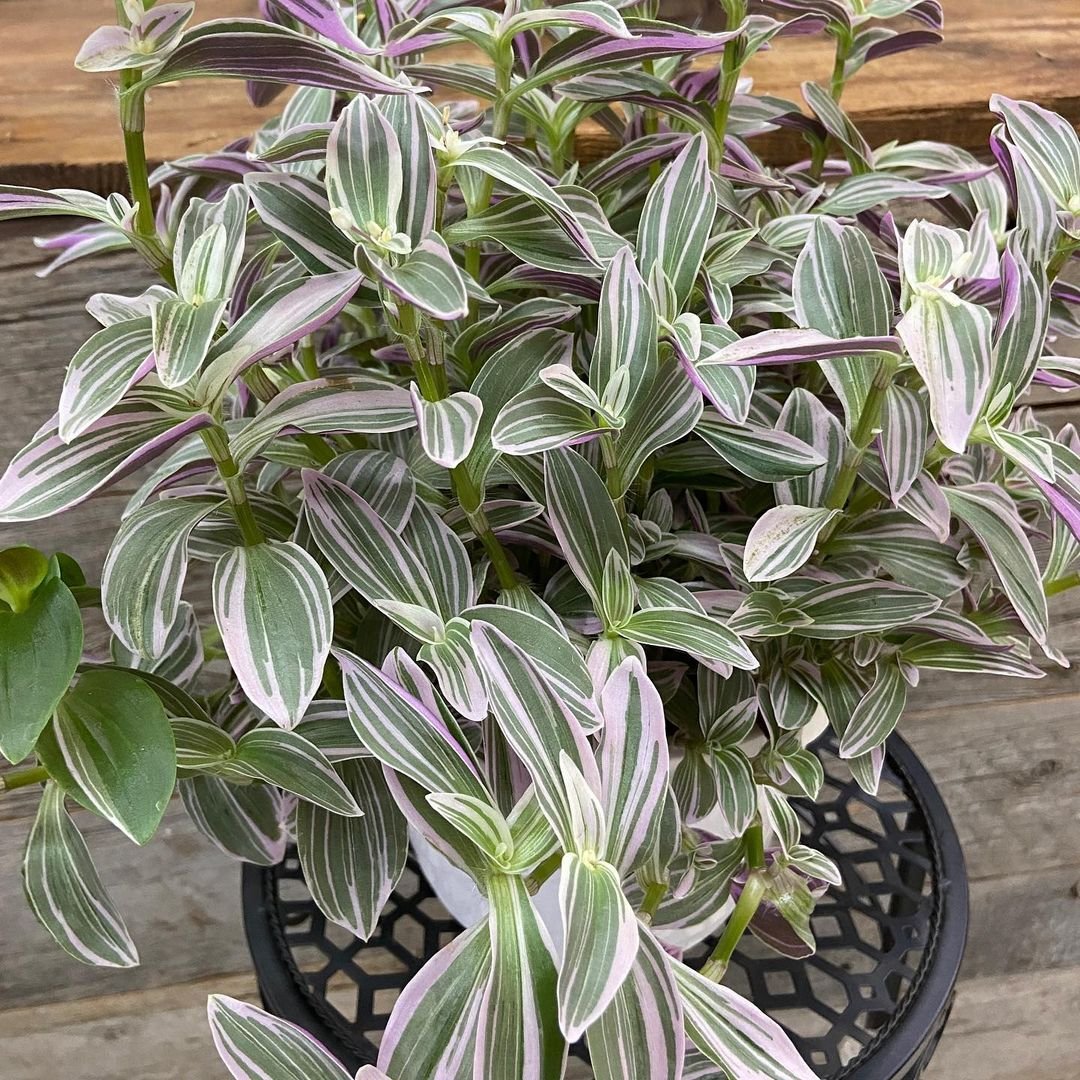
Tradescantia is a genus of herbaceous perennial wildflowers native to the Americas. With over 70 different species, this diverse group is commonly grouped into two main categories:
Upright types like Tradescantia virginiana, commonly known as spiderworts, produce clusters of small three-petaled flowers in shades of blue, purple or white.
Trailing or rosette-forming varieties like Tradescantia zebrina and Tradescantia pallida are grown primarily for their brightly colored, striped foliage. These are the ones most frequently seen as indoor houseplants.
Of these trailing tradescantia, the zebrina cultivars are among the most popular for their glossy, purple-tinged leaves adorned with silvery brush-stroke patterns. ‘Wandering Jew‘ is a common name, though some find this outdated term offensive.
Other beloved selections include:
‘Quadricolor’ – Leaves striped with green, red, purple and silver
‘Purple Heart’ – Solid deep purple-maroon foliage
‘Sweet Kate’ – Solid forest green leaves edged in pink or cream
Mexican or Oyster plant – Compact rosettes of green leaves with purple undersides
No matter the variety, most tradescantia produce small, short-lived flowers in shades of white, pink or blue that go largely unnoticed compared to their ornamental foliage.
Where to Grow Tradescantia
Hardy only to Zone 8 or warmer, most tradescantia are grown as houseplants or annual outdoor containers where winters are cold. They make excellent hanging baskets or trailing groundcovers.
When grown indoors, tradescantia needs plenty of bright, indirect light to maintain their rich coloring. East or west facing windows are ideal. South-facing may be too intense unless sheer curtains diffuse the sun.
As for temperature, tradescantia prefers the same warm, humid conditions as other tropicals at 65°F and above. Avoid cold drafts and keep away from heaters/AC units.
Tradescantia does very well planted outdoors in warm, humid climates. Just provide partial sun or filtered shade to prevent scorching. They prefer well-draining, humus-rich soil and tend to spread vigorously.
Planting Tradescantia
Whether starting with transplants or rooted cuttings, always choose containers with good drainage holes to prevent soggy soil that can lead to rot. Tradescantia are heavy drinkers and prefer their mix to dry somewhat between waterings.
For indoor plants, use a well-draining potting mix designed for houseplants. Or make your own blend with equal parts peat or coir, potting compost and perlite or sand to enhance aeration.
When potting, plant at the same depth as the original rootball, pressing the soil firmly around the base. Don’t bury too deep as this promotes stem rot.
If planting multiple tradescantia, space individual plants around 12 inches apart to account for their trailing/spreading habit as they fill in over time. Or try planting a single tradescantia in a hanging basket and letting the stems cascade over the sides.
Caring for Tradescantia
Consistent moisture and high humidity are key for keeping tradescantia lush and thriving. But overall, these plants are super low maintenance with just a few basic requirements:
Watering
Make sure soil is thoroughly moistened when watering, until it begins draining from the bottom of the pot. Allow the top couple inches to dry before watering again as tradescantia is prone to rot in soggy potting mix.
During warm months, you may need to water every 2-4 days. In winter, scale back watering to allow the top 50% of the potting mix to dry before hydrating again.
Taking tradescantia out of its decorative pot to water is helpful to prevent oversaturating the roots. Discard any excess water that drains through after 15 minutes.
Humidity
As tropical plants, tradescantia thrives in humid environments of at least 50% relative humidity. Anything below 40% can lead to crispy leaf edges and stunted growth.
Use pebble trays, humidifiers, frequent misting or bathroom locations to increase moisture in the air around your plants. You can also group containers together as their transpiration creates a humid microclimate.
Fertilizing Feed tradescantia plants monthly in spring and summer with a balanced houseplant fertilizer diluted to half strength. This gives them the nutrients needed to sustain lush, colorful growth.
Stop fertilizing in winter when plants enter dormancy. Too many nutrients during colder months can promote soft, leggy growth susceptible to disease.
Pruning
To stay tidy and promote bushiness, snip off any long, stringy stems from your tradescantia plants. Use sanitized pruners to shear back overgrown sections and remove any shriveled or yellowed foliage.
Do avoid excessive pruning though, as this can shock and slow growth. Prune strategically to maintain your desired shape and size.
Repotting With such vigorous growth, most tradescantia will need repotting every 1-2 years in spring. Move up only 2-3 inches in pot diameter at a time to avoid excessive moisture retention.
Take the opportunity to refresh the potting mix as well. Carefully remove the old media and shake loose any dead outer growth or circling roots before repotting into the new container.
Propagation
One of the best parts of tradescantia is how incredibly easy it is to propagate from cuttings for new plants! Here’s how:
Snip off 4-6 inch segments of healthy stem tips with a sharp, sterile shears or knife. Strip off the bottom leaves and set aside.
Fill a clean pot or container with moist potting mix or perlite. Create holes, dip the cut ends in rooting hormone if desired and place the stem cuttings into the holes.
Keep the cuttings in a warm, bright location and maintain consistent moisture by misting frequently or using a plastic humidity dome. Roots will develop within 2-4 weeks.
Once the new plants establish roots and new growth emerges, gradually allow the potting mix to dry slightly between waterings to build stronger roots.
Common Pests & Diseases
In general, tradescantia are wonderfully resilient and resist most diseases when provided their ideal conditions of rich soil, ample humidity, adequate nutrients and good air flow.
The most common problems come from soggy soil which can lead to rot, mold or pathogenic fungal issues like leaf spot or stem rot. Avoid overwatering and ensure containers have proper drainage.
As for pests, keep an eye out for infestations of spider mites, mealybugs or aphids which all enjoy feeding on tradescantia. Treat with insecticidal soap, neem oil or knock off with a strong spray of water.
Overall, providing the right growing conditions makes caring for tradescantia an absolute breeze! These energetic trailers reward you with colorful, fast-growing foliage that instantly brightens up any indoor or outdoor space. Start growing yours today!

